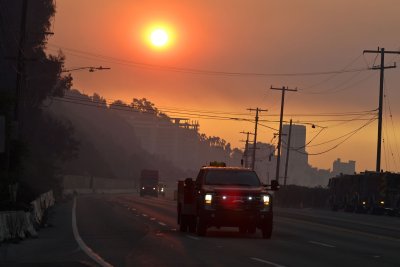
Aug. 10 (UPI) — Four C-130 military aircraft equipped with firefighting equipment have been deployed to battle a series of wildfires in the western United States as triple digit temperatures and low humidity readings combine to create conditions for blazes to spark and spread rapidly, government officials reported Sunday.
Two of the large tanker planes have been deployed from the Colorado Springs Airtanker base and the other pair from Mesa Gateway Airport in Mesa, Ariz.
There are currently 37 large wildfires burning across the United States, which have prompted officials to deploy 374 crews, 975 engines, 125 helicopters and 13 incident management teams to battle the blazes, according to the National Interagency Fire Center.
Nearly 43,000 fires have blackened more than 3.6 million acres across the country in 2025. That is nearly twice as many fires as last year, but the blazes this wildfire season have burned nearly half as many acres.
Forecasters predict wind gusts of up to 25 mph and single digit humidity readings in the Four Corners area will persist into the first part of the week, heightening the danger, creating conditions for fires to spread.
“Lighter winds, but still dry conditions are expected across the rest of the Great Basin and into the central Rockies,” the NIFC said Sunday.
“Hot, above normal temperatures and low (relative humidity) will spread across most of California and southern Oregon away from the coast.”
There are seven fires burning in California and Colorado, 6 in Arizona, 5 in Idaho and three fires each in Washington, Utah and Nevada.
Firefighters routinely battle challenging terrain in addition to the weather, making it especially difficult to contain fires in the most remote areas.